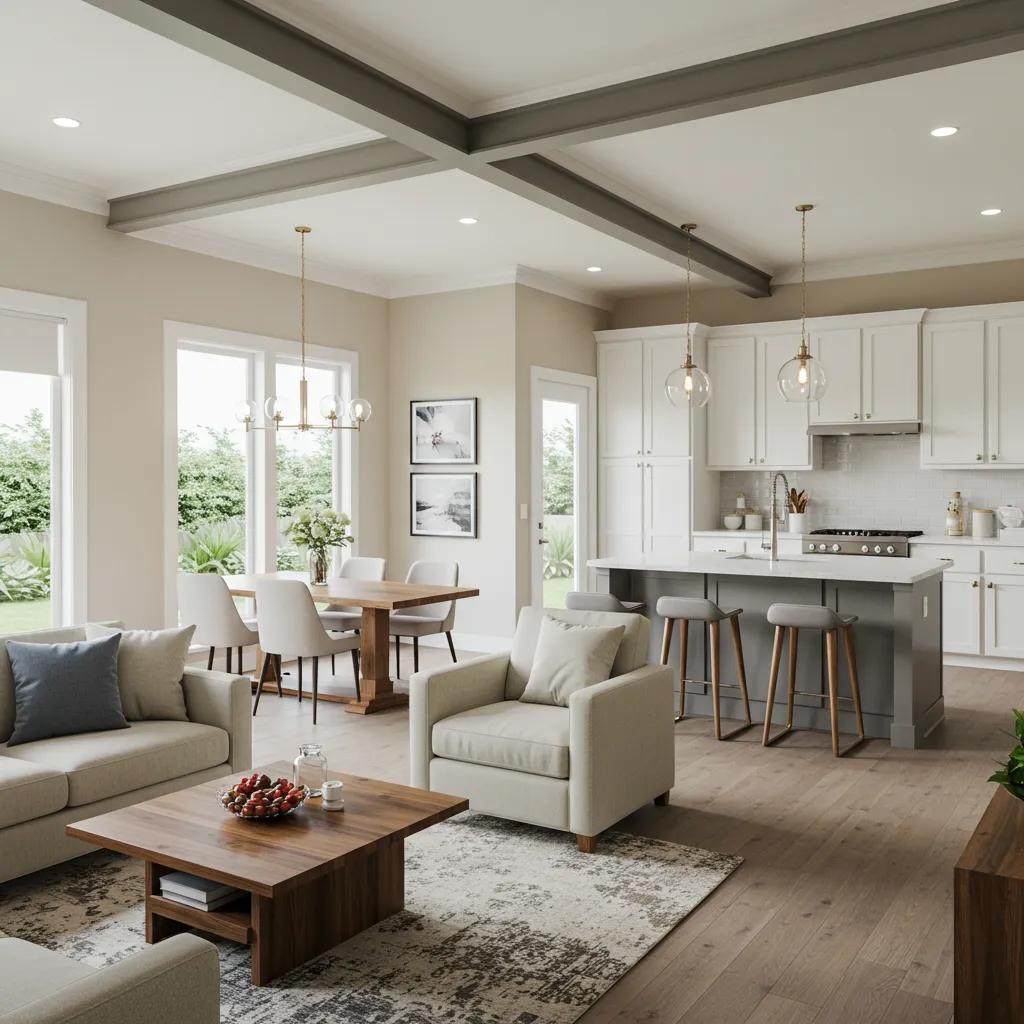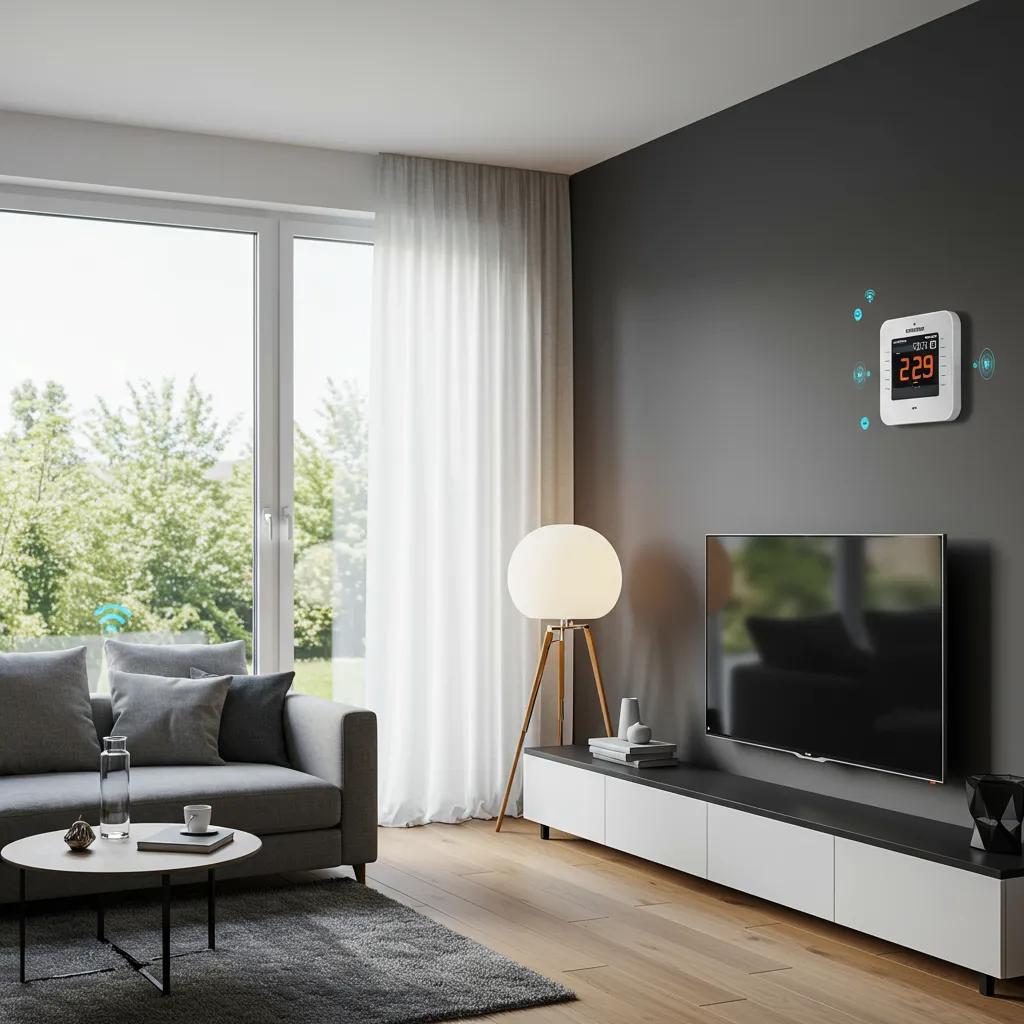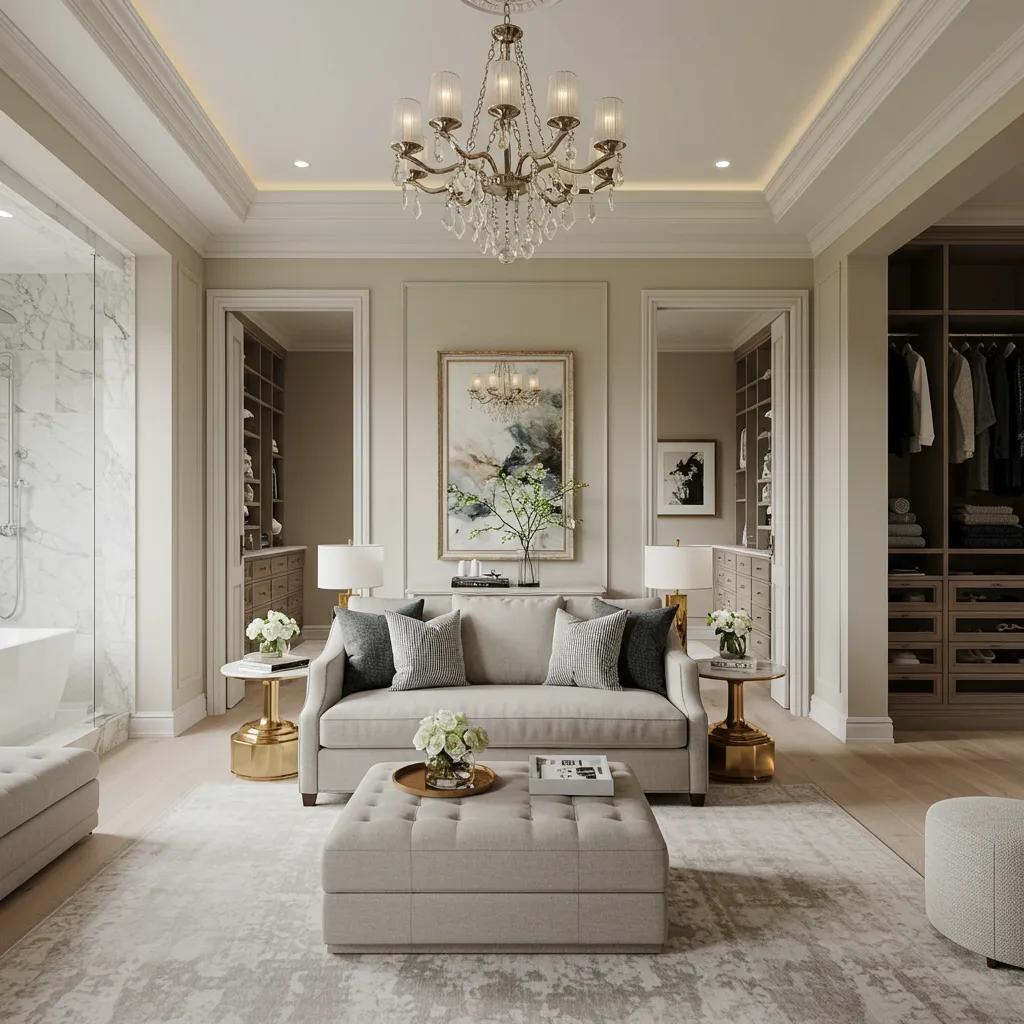
10 Must-Have Features to Consider in Your Custom House Plan
Crafting a home that’s uniquely yours can feel a bit daunting when you’re not sure which essential features to incorporate into your custom house plan design. Understanding ten pivotal elements—from open floor plans to universal design principles—will lay the groundwork for a home that perfectly suits your lifestyle, budget, and long-term aspirations. In this guide, you’ll discover:
The top features every custom home needs
Practical design considerations for each element
How to collaborate with your builder through our free consultation
Custom Builder Connection empowers you to explore these must-have features and connect with qualified custom home builders who will bring your vision to life.
What Are the Most Important Features to Include in Your Custom House Plan?

Custom home planning hinges on selecting features that enhance daily living, future-proof performance, and boost resale value. The three foundational elements below create the core of a functional, comfortable dwelling.
Why Is Open Concept Living a Top Feature for Custom Homes?
Open concept living integrates your living room, kitchen, and dining areas into a seamless layout that fosters social interaction and maximizes natural light. By removing non-structural walls, you create clear sightlines and improve airflow, promoting a sense of spaciousness and connection among family members.
Enhances natural daylight distribution throughout the main living zone.
Encourages flexible furniture arrangements and zoned living areas.
Simplifies entertaining by keeping hosts and guests in one shared space.
Open layouts set the stage for seamless technology integration in Smart Home systems without compartmental constraints.
Open Concept Living Benefits
Open concept layouts are often favored for their ability to enhance natural light distribution and promote a sense of spaciousness within a home. This design choice can also facilitate social interaction and create a more connected living environment for families and guests.
How Does Smart Home Technology Enhance Your Custom Home Design?

Smart home technology centralizes control of lighting, climate, security, and entertainment through intuitive interfaces. Integrating programmable thermostats and networked sensors delivers energy savings and personalized comfort.
System ComponentCore FunctionKey BenefitAutomated LightingOccupancy & daylight sensingReduces energy consumptionProgrammable ThermostatRemote climate controlMaintains ideal temperatureSmart SecurityVideo and sensor alertsImproves home safety
These interconnected systems create a responsive environment that adapts to your routines and reduces utility costs. With seamless wiring and control panels planned early, your builder can embed infrastructure for future upgrades.
What Benefits Does Energy Efficiency Bring to Your Custom House Plan?
Energy efficiency optimizes insulation, windows, and HVAC systems to minimize energy loss and utility expenses. High-performance materials and renewable technologies translate into long-term savings and enhanced comfort.
Energy Efficiency in Home Design
Energy-efficient design, incorporating elements like high-performance insulation and Energy Star windows, is crucial for minimizing energy loss and reducing utility expenses. These features not only lower heating and cooling bills but also contribute to a home's long-term value and appeal.
Green Building Council, Energy Efficient Homes (2023)
This citation reinforces the article's emphasis on energy efficiency by providing specific examples of how design choices can lead to cost savings and increased home value.
FeaturePerformance ImpactCost ImplicationHigh-Performance InsulationLimits heat transferLowers heating/cooling billsEnergy-Star WindowsBlocks UV and draftsReduces maintenance costsSolar-Ready Roof DesignSupports photovoltaic panelsCuts electricity expenses
By designing for efficiency, you not only reduce your carbon footprint but also create a robust value proposition that appeals to future buyers. Once efficiency is secured, a dedicated home office becomes an even more productive addition.
How Can a Dedicated Home Office or Flex Space Improve Your Custom Home?

A dedicated home office or flex space adapts to work-from-home demands, hobbies, or guest accommodations. Planning for lighting, sound control, and connectivity ensures versatile use without compromising your home’s aesthetics.
What Design Considerations Should You Know for a Functional Home Office?
A functional home office balances privacy with accessibility by positioning it in a quiet zone, adding built-in shelving, and specifying data ports. Proper daylighting, glare control, and an ergonomic layout support productivity and well-being.
Locate near an exterior wall for natural light and views.
Include recessed power outlets and high-speed internet jacks.
Choose acoustical treatments to minimize noise transfer.
These design details ensure your workspace serves professional calls, creative projects, and focused tasks equally well before you plan entertainment and leisure in the next area.
How Does a Flex Room Add Versatility to Your Custom House Plan?
A flex room transforms easily between a playroom, craft studio, or fitness area by using modular furnishings and multi-purpose storage. Sliding partitions and Murphy beds extend functionality without structural changes.
Modular Storage adapts to changing needs, from toy organization to equipment stowage.
Convertible Furniture like fold-away desks and sofa-beds maximize square footage.
Flexible Lighting switches between task and ambient modes for each use case.
With adaptable design in place, you can seamlessly transition to planning your master suite retreat.
Why Is a Luxurious Master Suite Essential in Your Custom House Plan Design?

A luxurious master suite serves as a private sanctuary featuring generous space, high-end finishes, and spa-inspired amenities. It enhances daily comfort and anchors your home’s resale appeal.
A well-appointed suite provides a restful retreat, integrated storage, and seamless access to outdoor or lofted sitting areas.
What Are the Key Elements of a Master Suite That Adds Value?
Master suites that command premium valuation include walk-in closets, dual vanities, and expansive shower layouts. Heated floors, towel warmers, and private balconies elevate the sense of luxury and convenience.
Spacious closet built-ins and island storage streamline wardrobe organization.
Zero-threshold showers and soaking tubs deliver spa-quality experiences.
Private outdoor access connects the suite to nature and fresh air.
Exceptional suite design naturally transitions into builder collaboration for installation and finish selections.
How to Integrate a Master Suite Seamlessly with Your Custom Builder?
Discuss layout flow, plumbing routing, and material selections upfront to align your vision with construction feasibility. Reviewing finish samples and fixture cut-sheets during your free consultation ensures accurate budgeting and timeline management with your builder.
Confirm ceiling heights and window placements for optimal daylight control.
Lock in plumbing rough-in locations before framing begins.
Select tile, stone, and hardware that complement the suite’s style.
With a refined master plan in place, you can move on to crafting a gourmet kitchen where gatherings naturally center.
What Makes a Gourmet Kitchen with an Island a Must-Have Feature?

A gourmet kitchen combines professional-grade appliances, ample workspace, and a central island for meal prep and casual dining. This focal point supports entertaining, family breakfasts, and multi-cook culinary adventures. Integrated storage, task lighting, and durable surfaces optimize workflow and style.
How Does a Kitchen Island Enhance Functionality and Style?
A kitchen island anchors traffic flow, offers additional prep zones, and houses extra storage or seating. Incorporating a sink or cooktop into the island encourages chef-guest interaction and efficient cleanup.
Island FeaturePractical RoleDesign AdvantageUnder-counter StorageHolds cookwareKeeps surfaces clearIntegrated Sink or CooktopCentralizes food prepEngages guests during mealsOverhead Pendant LightingIlluminates workspaceAdds architectural interest
Well-planned islands prepare you to consider adjacent outdoor amenities next.
What Are the Latest Trends in Custom Kitchen Design?
Modern kitchens emphasize mixed-material palettes, hidden appliances, and built-in coffee or wine stations. Smart faucets, touch-activated drawers, and voice-controlled lighting provide tech-driven convenience.
Two-Tone Cabinetry combines contrasting stains for visual depth.
Drawer-Style Dishwashers integrate seamlessly behind panel fronts.
Pop-Up Power Outlets maintain clean counters until needed.
Trend-forward kitchens flow naturally into designing outdoor living areas that extend your home’s footprint.
How Do Outdoor Living Spaces Elevate Your Custom Home Experience?
Outdoor living spaces transform backyards into functional extensions of interior rooms, encouraging year-round enjoyment. Covered patios, outdoor kitchens, and fire features blur the line between inside and out.
By planning drainage, shade structures, and material transitions, your builder ensures a cohesive indoor-outdoor connection.
What Are Popular Outdoor Features to Include in Your House Plan?
Homeowners consistently choose covered terraces, built-in grills, and retractable screens for weather flexibility. Fire pits, water features, and lounge areas create inviting focal points for social gatherings.
Built-In Grill Stations for culinary demonstrations and easy cleanup.
Retractable Pergolas that shade seating areas on hot days.
Outdoor Fireplaces that extend comfortable use into cooler seasons.
These features set the stage for a seamless builder consultation on outdoor details.
How to Plan Outdoor Spaces with Your Custom Builder?
Coordinate site grading, utility hookups, and structural supports early—your builder can integrate patios and pergolas during foundation work to reduce retrofitting costs. Sharing landscape plans and material palettes before framing ensures harmony with interior finishes.
Review soil conditions and drainage plans before laying patios.
Match exterior lighting controls with your home’s smart system.
Select durable surfaces like composite decking or natural stone.
After outdoor layout is finalized, practical entryways become the next functional priority.
Why Should You Include a Mudroom and Organized Entryways in Your Custom House Plan?

A mudroom and organized entryway create a transition zone that contains clutter, stores outerwear, and protects living spaces from dirt and moisture. Custom lockers, cubbies, and bench seating enhance daily routines.
These entry zones improve traffic flow and maintain interior cleanliness without effort.
What Storage and Organizational Benefits Do Mudrooms Provide?
Mudrooms streamline morning and evening rituals by offering designated spots for coats, shoes, and bags. Built-in shelves, hooks, and ventilated storage keep items dry while freeing kitchen and living areas from clutter.
Mudroom design details set a clean foundation for planning broader storage solutions throughout your home.
How to Design Entryways That Balance Function and Style?
Combine durable flooring, statement lighting, and coordinated storage units to create an entry that’s as welcoming as it is practical. Integrate seating and umbrella stands, and choose finish materials that echo your home’s architectural style for unified design.
Specify tile or stone flooring for easy cleanup.
Install a built-in bench with storage drawers underneath.
Add accent lighting to highlight architectural details.
With entry zones well-defined, it’s easy to integrate comprehensive storage throughout the floor plan.
How Can Ample Storage Solutions Improve Your Custom Home’s Functionality?

Ample storage safeguards living areas from clutter and accommodates evolving needs. Custom pantry walls, under-stair nooks, and attic trusses maximize every cubic foot, keeping spaces organized and adaptable.
Well-planned storage systems reduce stress and free up living zones for activities.
What Are Effective Storage Ideas for Custom House Plans?
Strategic storage ideas include pull-out pantry cabinets, garage overhead racks, and closet organizers with adjustable shelving. Concealed nooks under staircases and window seats provide hidden stowage without sacrificing style.
Pull-Out Pantry Units make every shelf accessible.
Garage Overhead Tracks store seasonal items out of the way.
Built-In Bedroom Closets with modular inserts adapt to changing wardrobes.
Once storage is detailed, planning accessibility considerations becomes the next essential step.
How to Discuss Storage Needs with Your Custom Builder?
Provide your builder with a list of gear—sports equipment, holiday décor, hobby supplies—and highlight problem areas in your current home. Discuss intended location, weight capacity, and finishes to achieve exact shelving heights and load-bearing specs.
Share dimensions of large items to ensure proper compartment sizing.
Confirm finish materials that match adjacent millwork.
Review load-bearing requirements for attic and garage storage.
After storage systems are locked in, universal design principles round out your inclusive home plan.
What Are Universal Design Principles and Why Are They Important for Your Custom Home?

Universal design creates spaces that are safe, comfortable, and usable by people of all ages and abilities. Features like zero-step entries, wider doorways, and lever handles promote lifelong adaptability without compromising aesthetics.
By embedding accessibility from day one, you avoid costly retrofits and welcome guests or family members at every life stage.
How Does Universal Design Create a Comfortable Home for All Ages?
Universal design minimizes barriers with level thresholds, nonslip flooring, and grab-wall provisions in bathrooms. Flexible cabinets and adjustable countertops adapt to varying heights and mobility needs, fostering independence for every resident.
A barrier-free environment naturally supports energy-efficient systems and smart home controls introduced earlier.
What Features Should You Include to Ensure Accessibility and Flexibility?
Incorporate 36-inch corridor widths, curbless showers, and at least one ground-floor bedroom with an adjacent full bath to accommodate future needs. Lever-style door hardware and rocker light switches improve usability for all ages and abilities.
Design bathrooms with reinforced walls for potential grab bar installation.
Choose variable-height island sections in kitchens.
Plan extra electrical outlets at reachable heights.
With universal principles planned, it’s crucial to align feature choices with budget and consultation timelines.
How Do Cost and Builder Consultation Influence Your Choice of Custom Home Features?

Balancing desired amenities with realistic budgets depends on transparent cost estimates and early builder involvement. Discussing feature feasibility, long-term maintenance, and return-on-investment helps you make informed decisions before construction begins.
Early consultations reduce change orders and keep your project on schedule.
What Are the Typical Cost Implications of Popular Custom Home Features?
High-end finishes like quartz countertops and custom cabinetry can add $5,000–$15,000 to budgets, while smart home systems range from $2,000–$10,000 depending on scope. Outdoor living upgrades can cost $8,000–$20,000, driven by materials and labor complexity.
Understanding price ranges helps you prioritize features and explore alternative materials without sacrificing quality.
How to Prepare for Your Free Consultation with a Custom Home Builder?
Gather inspirational images, floor plan sketches, and a list of must-have versus nice-to-have features. Share your project timeline, budget range, and site constraints in advance so your builder can present accurate proposals and phased options.
Compile a folder of design references and wish-list items.
Note any zoning or HOA restrictions that affect design scope.
Define your budget limits and financing timeline.
What Questions Should You Ask Your Builder About Feature Feasibility?
Ask about material lead times, labor coordination, and long-term maintenance requirements. Inquire how each feature affects project schedule, warranty coverage, and future upgrade potential to avoid hidden costs or timeline slips.
“How do these features impact our estimated completion date?”
“What warranties cover smart home and mechanical systems?”
“Can we phase certain amenities to manage cash flow?”
Thorough consultation preparation paves the way for a custom home that truly reflects your vision and needs.
Custom Builder Connection streamlines this process by matching you with vetted professionals who guide you through every decision and cost implication. Book your free consultation today to transform these essential features into the foundation of your dream home.


